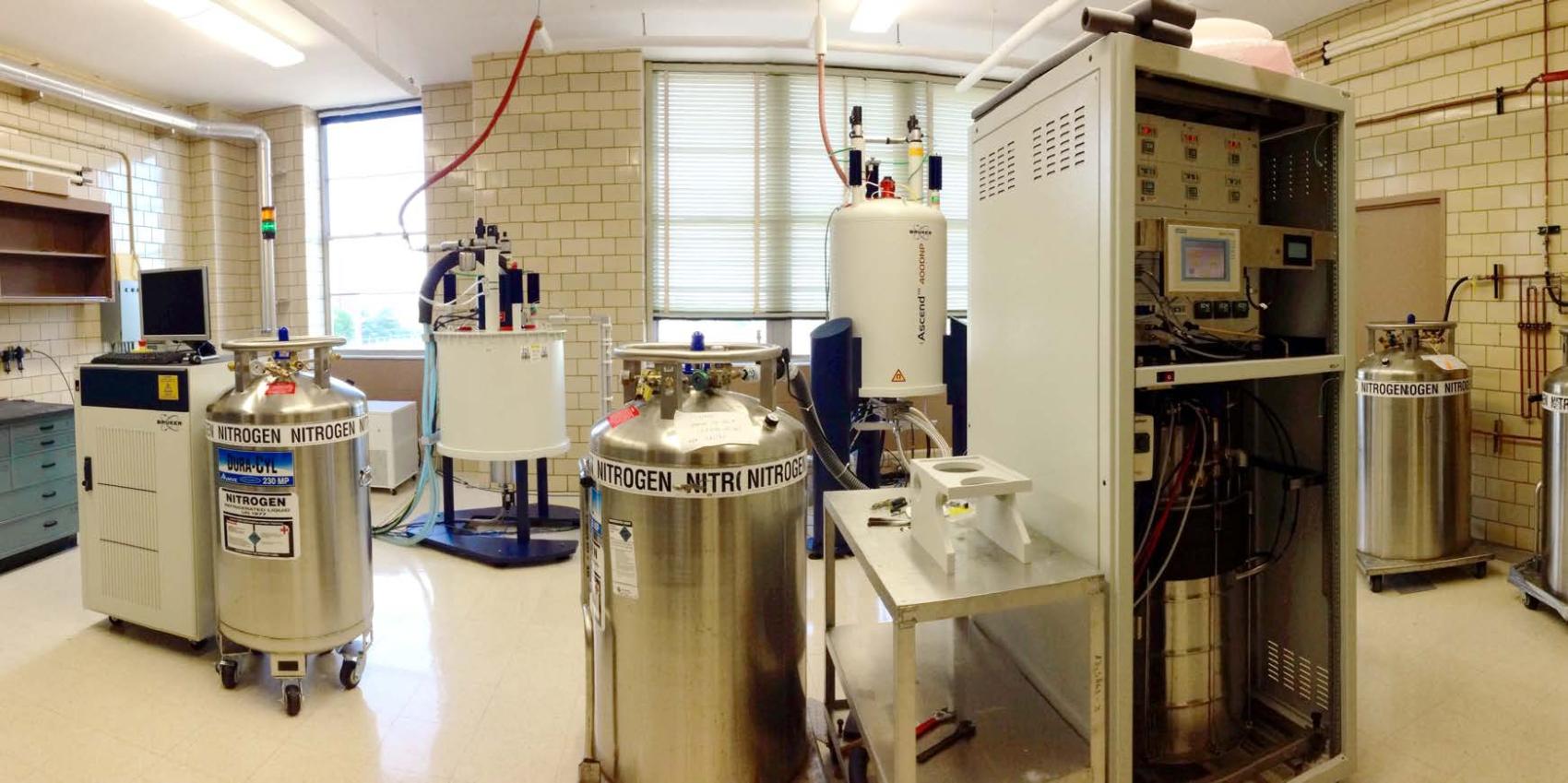Dynamic Nuclear Polarization (DNP) Nuclear Magnetic Resonance (NMR)
In 2021, Ames Laboratory cut the ribbon on a newly remodeled and expanded space to house our state-of-the-art Nuclear Magnetic Resonance NMR capabilities. We are home to the United States’ first dynamic nuclear polarization (DNP) solid-state NMR spectrometer dedicated exclusively to the study of materials science and chemistry.
What is NMR?
Most people associate NMR with magnetic resonance imaging (MRI), which is used as a diagnostic tool in medicine. Nuclear magnetic resonance probes the nuclei of atoms as they absorb and re-emit radio waves when they are placed in a magnetic field. Those nuclei resonate at measurable radio-frequencies that precisely depend on the local structure of material, the element being studied, and the strength of the magnetic field.
The frequency at which nuclei respond creates a unique spectral "fingerprint" of their local environment within a material. These "fingerprints" are especially useful in understanding the structure of non-crystalline materials: that is, materials that do not display regular crystalline structure amenable to diffraction studies.
What is DNP-NMR?
DNP offers a remarkable boost in overcoming NMR’s greatest weakness – intrinsically low sensitivity – by departing from conventional NMR approaches and polarizing nuclei via the unpaired electrons. DNP-NMR relies on excitation of unpaired electrons by microwave irradiation, and transfers the resulting spin polarization to the material's nuclei. This method results in a much stronger response from these nuclei than is possible in conventional solid-state NMR. Hundred-fold increases in sensitivity have been observed.
What do you study using DNP-NMR?
DNP solid-state NMR is a tool used in multiple Ames Laboratory research projects, including the study of complex metal hydrides, novel heterogeneous catalysts, biological nanocomposites, thermoelectrics and other energy-related materials. DNP is still an emerging technology. New frontiers in materials research and chemistry will undoubtedly be opened through further (un)foreseen advances; and our researchers are developing new sensitizers, dedicated pulse sequences, new types of polarizing agents, and improved sample formulations on an ongoing basis.

